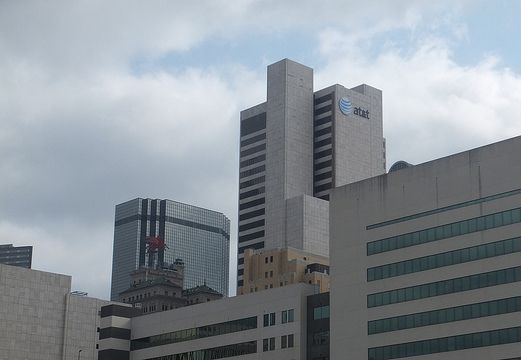
Recently proposed mega-merger falls in the crosshairs of presidential race.
“Deals like this destroy democracy.”
During a recent campaign stop in Gettysburg, Pennsylvania, Donald Trump unleashed these words about deals similar to the rumored AT&T and Time Warner mega-merger just moments before its official announcement.
Perhaps worried about this very kind of rallying cry by Trump and others, AT&T and Time Warner apparently had hoped to postpone announcing their mega-merger until after the contentious November election. But days after a reported leak about the final negotiations, the companies publicly announced their $85.4 billion deal—exposing themselves to election season fervor and inviting speculation about what action the future President could take to stop it.
Mergers and acquisitions is a broad term used to describe a company’s purchase or fusion with another company for a strategic purpose. Recently, telecommunications giant AT&T released a statement saying that it would acquire Time Warner, a leader in media and entertainment, for $85.4 billion—one of the highest appraised buyouts of the year. Randall Stephenson, AT&T’s Chairman and CEO, announced that the merger “is a perfect match of two companies with complementary strengths” that would “give customers unmatched choice, quality, value and experiences that will define the future of media and communications.”
Likewise, Time Warner’s Chairman and CEO, Jeff Bewkes, noted that the merged company would have an enhanced ability to innovate and deliver premium content; Time Warner’s portfolio includes HBO, Warner Brothers film franchises, and various U.S. and international cable networks.
U.S. antitrust law delegates responsibility for conducting merger review processes to the Federal Trade Commission (FTC) and the U.S. Department of Justice (DOJ). The FTC explains that the antitrust code is “designed to prevent anticompetitive mergers or acquisitions” by giving either the FTC or DOJ—whichever has superior industry expertise in a matter—the ability to “take legal action to block deals it believes would substantially lessen competition.”
AT&T’s Stephenson reportedly acknowledged that regulators may condition deal approval on the companies meeting certain demands, but also expressed confidence that the deal will ultimately pass regulatory review.
Yet neither of the two major presidential candidates supports the deal. As noted, Trump swiftly denounced news of the proposal, highlighting that CNN is among the various television networks Time Warner controls. “AT&T is buying Time Warner, and thus CNN—a deal we will not approve in my administration because it’s too much concentration of power in the hands of too few,” said Trump.
Given Trump’s open disdain for CNN—he refers to it as the “Clinton News Network”—AT&T’s Stephenson immediately assured the public that CNN would retain full editorial independence. “I think you can begin to destroy a brand like CNN if you begin to meddle in its independence,” he acknowledged.
Hillary Clinton waited to articulate her position on the proposed deal until several days after the announcement, but she too expressed skepticism about its benefits for the nation. The deal, she said, “raises questions and concerns” that “should be looked into.” Clinton stated that as President, she would “expect the government to conduct a very thorough analysis before making a decision.”
Clinton has expressed similarly strong opinions about mega-mergers in the past. In 2015, Clinton released a statement decrying two different health insurance mergers and documenting her “strong stand against excessive corporate concentration.” The statement also provides specific details on how, if elected, Clinton would fight corporate concentration. Namely, she would address merger policy by appointing regulators who will aggressively fight anticompetitive practices, increasing antitrust enforcement, and building on an Executive Order issued by President Obama to “take on concentration administration-wide,” according to the statement.
Despite the positions expressed by candidates Clinton and Trump on the proposed AT&T-Time Warner deal, a sitting President cannot block mergers unilaterally.
President Obama, however, demonstrated the disruptive potential of executive power in mega-mergers earlier this year when Pfizer, a pharmaceutical company, sought to complete one of the largest mergers ever by acquiring Allergen, the maker of Botox, for $160 billion. The massive deal would have allowed the companies to avoid paying around $35 billion in U.S. taxes by employing a strategy known as a “corporate inversion.” Some U.S. firms have employed the inversion tactic to lower their tax rates by merging with a foreign company and designating the applicable foreign country as the headquarters of the merged companies.
The perceived tax dodge has received immense public criticism. In response, President Obama took to the White House briefing room, where he announced that companies who used the “insidious” inversion loophole “effectively renounce their citizenship” by moving overseas to avoid taxes.
Months after the announcement of the proposed Pfizer-Allergan deal, the U.S. Department of Treasury responded to the public outcry by issuing a new rule on inversions. The rule—which did not name Pfizer and Allergan specifically, but appeared to target them—imposed barriers on the ability of U.S. companies to claim the inversion tax benefit. These barriers prevented Pfizer and Allergen from saving the $35 billion in taxes that they originally anticipated, causing the value of deal to plummet and collapse days later.
Although AT&T apparently is not seeking to use corporate inversions, the Pfizer deal demonstrates how executive agencies can implement rules that disrupt the value of proposed mergers.
For AT&T and Time Warner to avoid the same type of agency action that derailed the Pfizer-Allergen deal, their biggest challenge may be avoiding the crosshairs of whichever candidate takes the oath of office on January 20, 2017.
The image of the AT&T headquarters is the property of the Aiden Wakely-Mulroney and is used under a Creative Commons License.



